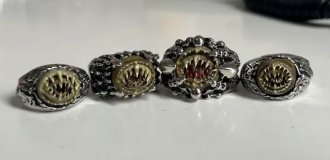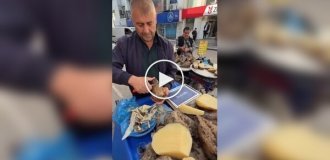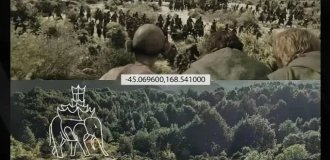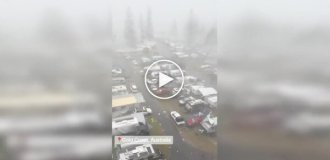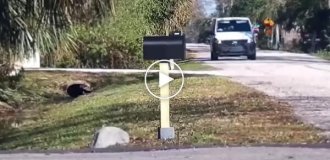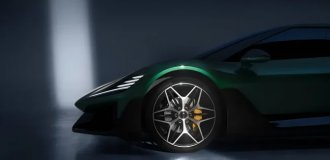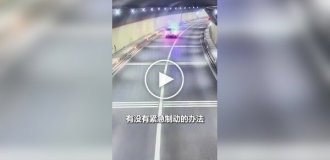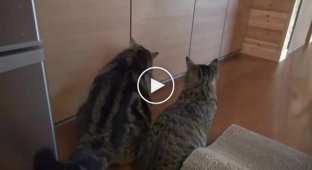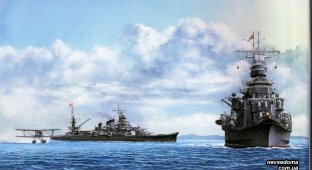An unequal battle that changed the plans of the Japanese command. A successful shot of “Ondina” (7 photos)
The Battle of the Cocos Islands was a battle between the Japanese raiders Hokoku Maru and Aikoku Maru and the British minesweeper Bengal, which was escorting the Dutch tanker Ondina. The battle took place on November 11, 1942 - not to be confused with the battle between the German cruiser Emden and the Australian cruiser Sydney on November 9, 1914. It is noteworthy that it is called exactly the same. 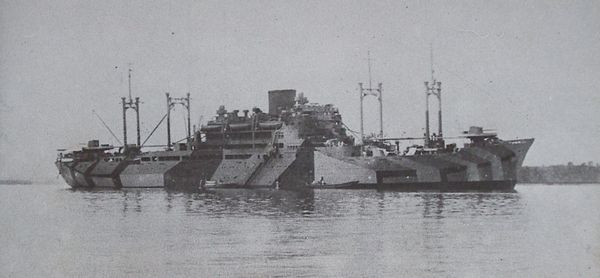
Imperial Navy auxiliary cruiser Hokoku Maru
Background
To combat Allied maritime trade, on August 29, 1941, the Imperial Navy requisitioned three modern high-speed ships that were supposed to sail between Osaka and South America: Aikoku Maru, Hokoku Maru and Gokoku Maru. At private shipyards, the ships were converted into auxiliary cruisers, installing four 152 mm Type 41 guns, two 76 mm anti-aircraft guns, and two twin mounts of heavy machine guns. In addition, each auxiliary cruiser received 2 twin torpedo tubes and a pair of reconnaissance seaplanes.
The Hokoku Maru and Aikoku Maru set sail for the Indian Ocean to attack Allied communications. They acted quite successfully, and in a couple of months they sank about a dozen transport ships flying the flags of New Zealand, Australia, the Netherlands and the USA. In October 1942, the cruisers left for the northern coast of Australia to search for new targets. 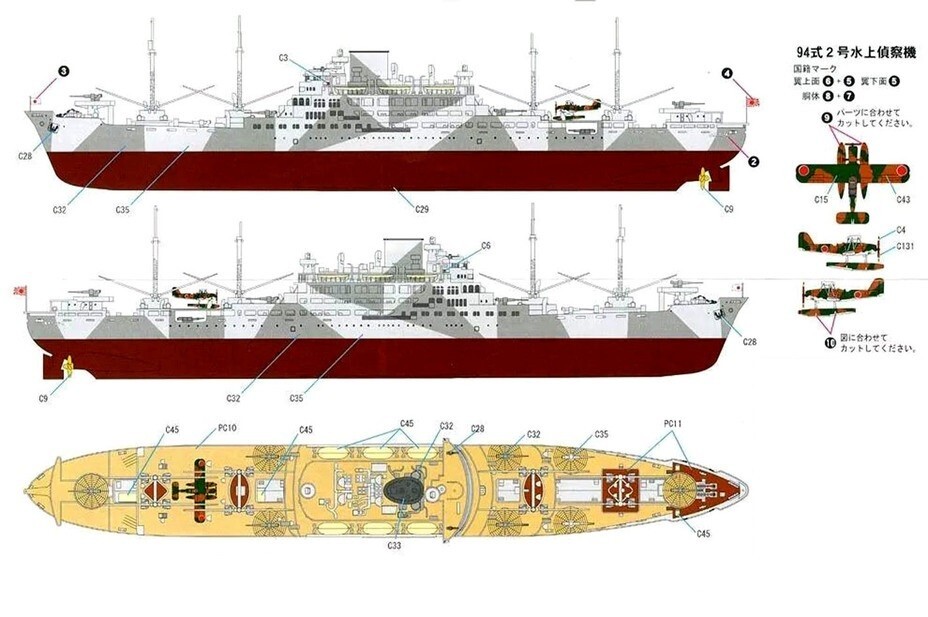
Auxiliary cruiser Aikoku Maru and seaplane Kawanishi E7K as of spring 1942
In early November, the Dutch tanker Ondina set sail from Fremantle, Australia, to Abadan, escorted by the Bathurst-class minesweeper Bengal, which belonged to the Indian Royal Navy. The Bengal carried one 76 mm gun and three anti-aircraft guns: one 40 mm and two single 20 mm. To protect against Japanese submarines, the Ondina was armed with a 102-mm gun—these were installed on most Allied ships sailing in the Indian Ocean. The crew of the tanker was sufficiently trained and equipped with experienced artillery crew.
Progress of the battle
On November 11, 1942, at 11:45, the signalman on the Bengal noticed smoke on the oncoming course. When the ships came close enough for identification, the minesweeper captain, Lieutenant Commander Wilson, identified the unknown ship as an enemy auxiliary cruiser, and then noticed another one. He ordered the tanker to be radioed so that it would depart at maximum speed to the rendezvous point, and the minesweeper sounded a combat alarm and headed to intercept the Japanese cruisers.
To say that the forces were unequal is to say nothing. Against one 76-mm gun with an effective firing range of about 2000 meters, the Japanese fielded 8 more powerful and long-range 152-mm guns, and their speed was 5 knots higher than the speed of the minesweeper. 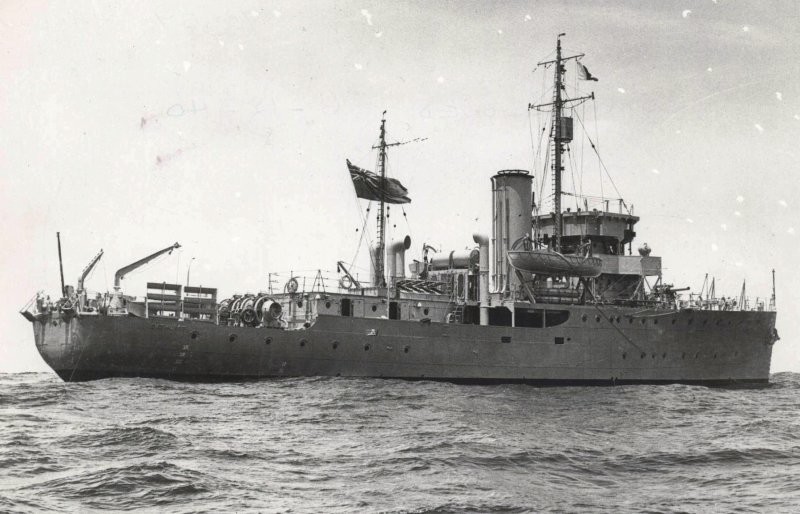
The lead ship of the Bathurst series of minesweepers, of the same type as the Bengal, during sea trials in Sydney, November 1940. The ships were named after Australian cities
"Hokoku-Maru" lay down on a collision course with "Bengal". Wilson ordered to come as close as possible, but the Japanese cruiser opened fire from a distance of 3,400 meters. A few minutes later, the Aikoku-Maru changed course and also went across the minesweeper - apparently, the captains decided to deal with it first and then catch up with the Ondina, taking advantage of their superior speed.
But the captain of the tanker, Hosman, decided not to wait for the Japanese to destroy his ship, he laid down on the opposite course and ordered the gunners to shoot from the maximum distance. With the third shot, the Ondina's gunners hit the wheelhouse, and then with several more shots they slightly damaged the deck buildings. At this moment, the Aikoku-Maru approached the battle site within salvo range. 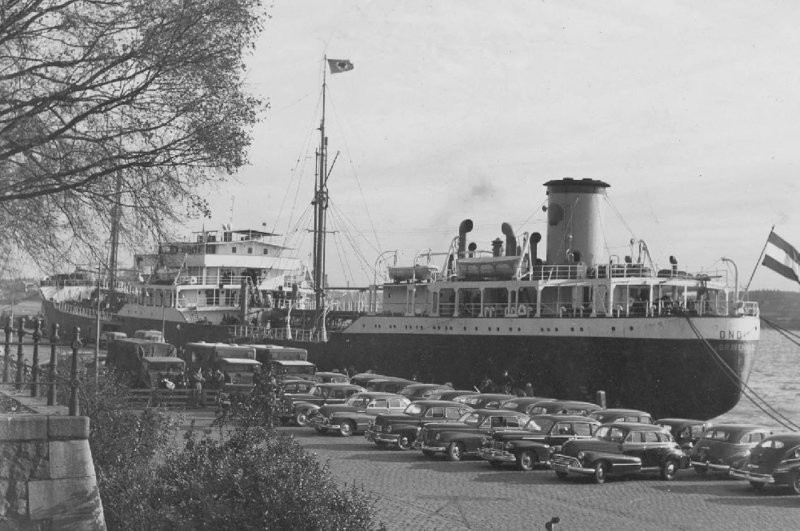
Dutch tanker Ondina with a cargo capacity of 6341 gross tons. Could accelerate to 12 knots
At approximately 12:20 p.m., the tanker's gunners accomplished the impossible. A 102-mm shell hit the stern torpedo tube, which contained two torpedoes ready to fire. There was a detonation and explosion of such force that the seaplane based on the stern was literally torn to pieces, thrown several tens of meters into the ocean. Due to the explosion, aviation gasoline ignited and a powerful fire started in the stern, and the cruiser began to list to starboard. There is still no exact information about exactly whose shell it was - this is according toThe fall is attributed to both the Dutch and Indian sailors from the Bengal, which also fired at the Hokoku Maru. However, according to the surviving Japanese sailors, they were hit by a shell from the tanker.
On the Hokoku Maru, a struggle began for the survivability of the ship, but at the same time it continued to fire at the minesweeper, and two guns transferred fire to the tanker. The Aikoku Maru focused on the Bengal. Captain Wilson soberly decided that the death of his ship was only a matter of time, and ordered to retreat to the north, trying to drag the enemy with him. By 12:40 the minesweeper was hit in the forecastle, and the captain decided to retreat under the cover of a smoke screen. However, the dropped smoke buoys did not work for some reason. At 12:45 the minesweeper received a second direct hit - in the stern. And only after that we managed to put up a curtain and leave the battle. 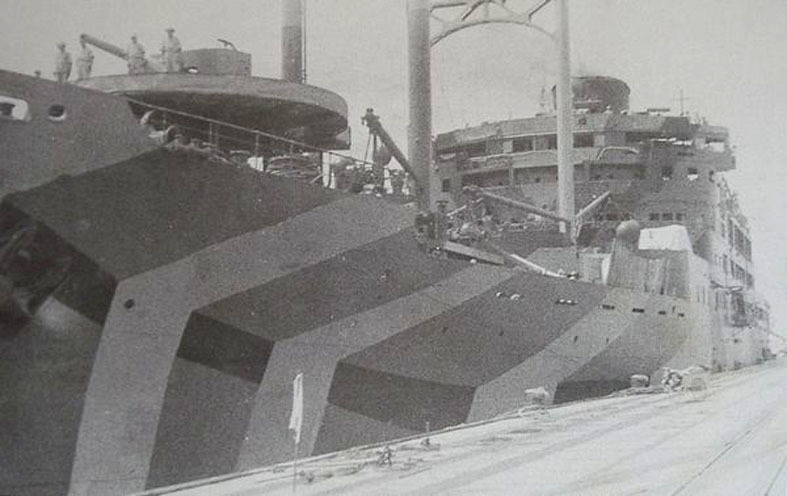
Auxiliary cruiser Hokoku Maru. From above you can see a 140 mm gun
At 13:05, the burning Hokoku Maru received a couple more hits from Ondina. Despite all efforts, the fire could not be extinguished - the fire reached the artillery magazines and fuel tanks. The captain ordered the crew to abandon the sinking ship. At 13:12 the ammunition exploded and the Hokoku Maru broke in half.
After the death of the cruiser, the captain of the Aikoku-Maru ordered the pursuit of the minesweeper to stop and turned back to destroy the Ondina. There are about 10 shells left on the tanker. When the ammunition was exhausted, Captain Horsman ordered to abandon the tanker, but he himself was killed - a shell from the cruiser hit the captain's cabin. 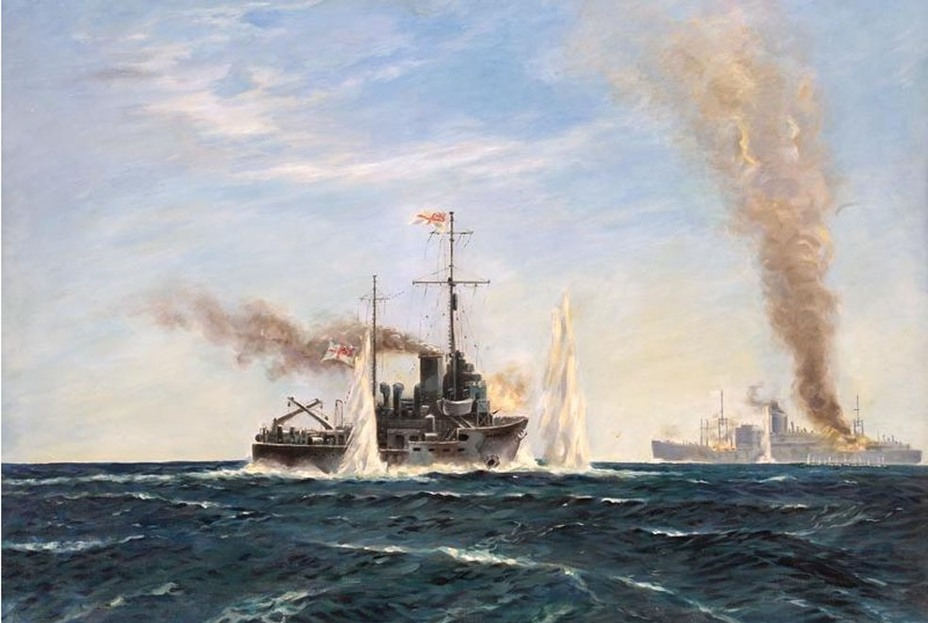
The minesweeper (unofficially corvette) Bengal is engaged in a battle with the auxiliary cruiser Aikoku Maru. November 11, 1942
The Aikoku-Maru approached the abandoned ship within range of a torpedo salvo and fired two torpedoes at it, after which it went to the Hokoku-Maru to rescue the crew. Both torpedoes hit the starboard side, making huge holes in it, but the tanker was sailing with ballast. Therefore, despite the roll of almost 30 degrees, it remained buoyant.
After rescuing the surviving sailors, the cruiser returned to the tanker and fired another torpedo at it, but it missed. Judging that with the Ondina's roll increasing to 35 degrees, it would still sink, the Aikoku-Maru set a reverse course and left the battlefield.
But the tanker crew members who escaped on boats decided to return. They started the car, which was not damaged, put out the fires and leveled the roll, flooding the compartments on the left side. After all the events, the tanker set off for Fremantle at a speed of 8 knots, where it arrived on November 18, 1942. The minesweeper "Bengal" with its stern torn up arrived there a day earlier.
Results
This incredible battle went down in naval history as a symbol of bravery and bravery. Moreover, subsequently the Japanese command, having lost a fairly strong ship in a battle with an enemy that was obviously inferior to it, ordered the cessation of raider operations, which made the situation easier for the allies in the Pacific theater of operations and in Southeast Asia.
